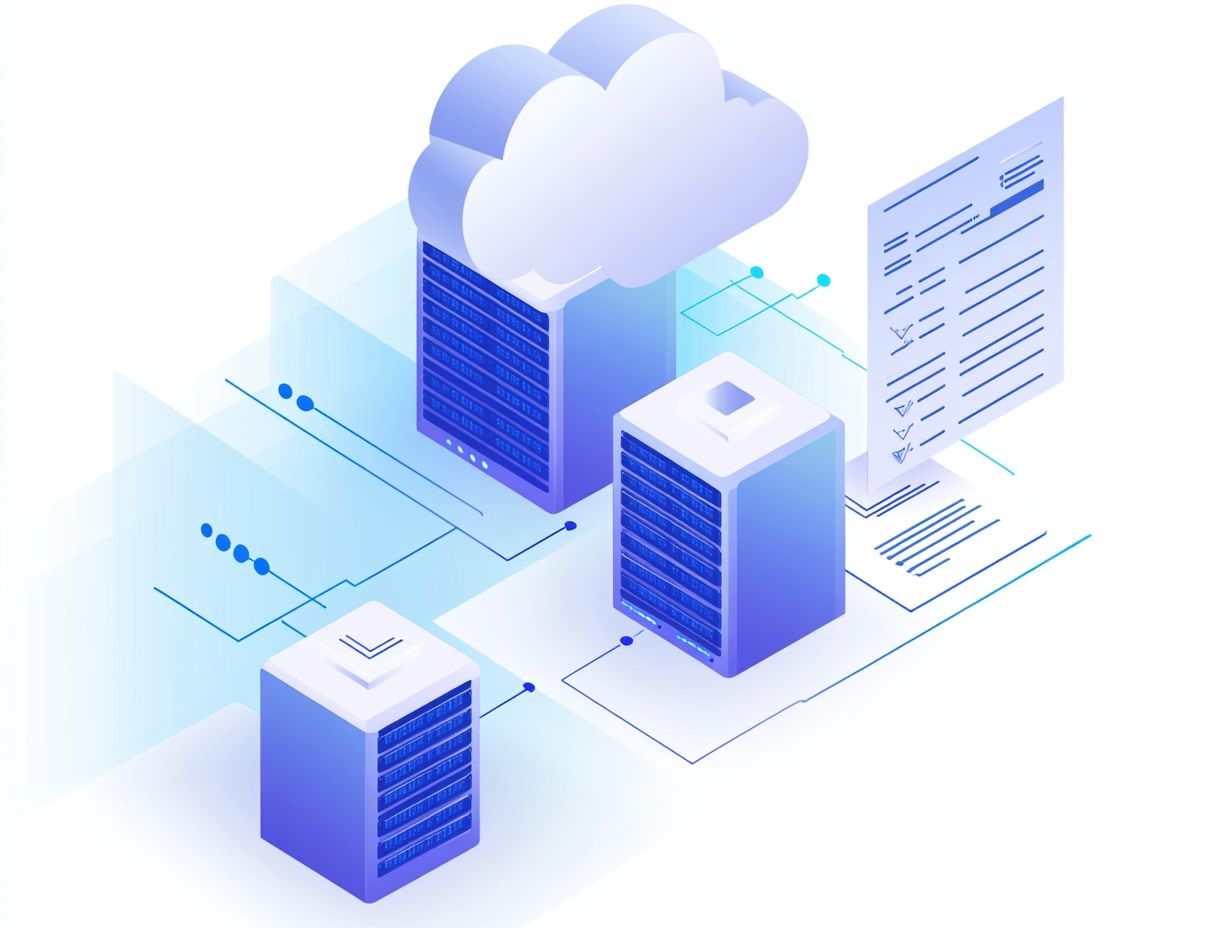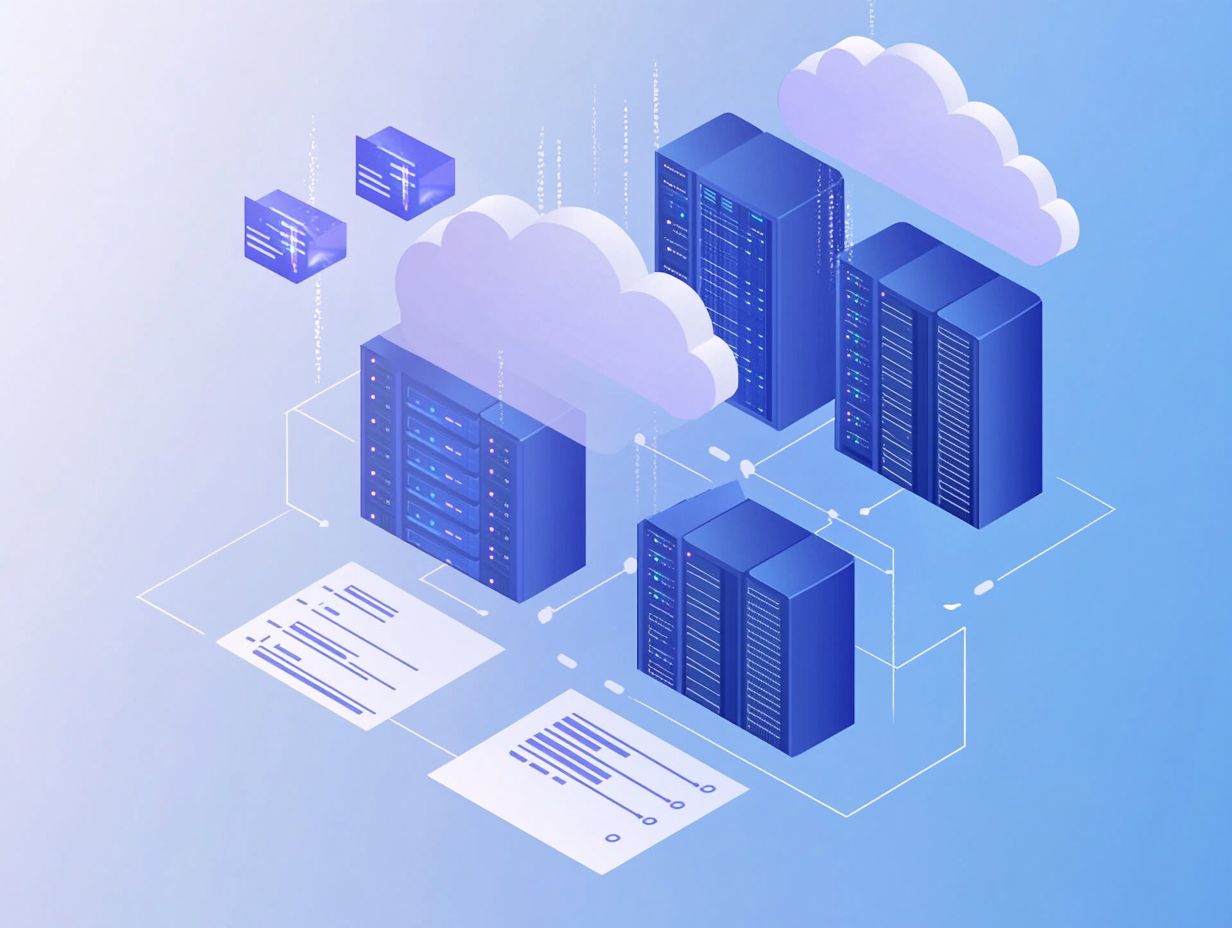Top 3 Cloud Migration Methodologies Explained
As you navigate the shift to the cloud, selecting the right migration approach becomes essential.
This article delves into the top three approaches: Lift and Shift, Re-platforming, and Re-architecting. Each approach offers unique advantages and challenges that can greatly influence your transition.
We will address common challenges and share best practices to ensure a smooth migration.
Are you ready to transform your cloud strategy today? Let s dive in!
Contents
- Key Takeaways:
- 1. Lift and Shift Approach
- 2. Re-platforming Approach
- 3. Re-architecting Approach
- Which Methodology Is Best for Your Business?
- What Are the Key Differences between These Methodologies?
- What Are the Benefits and Drawbacks of Each Methodology?
- How Can a Business Choose the Right Methodology for Their Cloud Migration?
- What Are the Common Challenges Faced during Cloud Migration Using These Methodologies?
- What Are the Best Practices for a Successful Cloud Migration Using These Methodologies?
- What Are the Future Trends in Cloud Migration Methodologies?
- Frequently Asked Questions
- What are the top 3 cloud migration methodologies?
- What is the lift and shift cloud migration methodology?
- What is re-platforming in cloud migration?
- What is refactoring/architecting in cloud migration?
- Which cloud migration methodology is best for legacy applications?
- What factors should be considered when choosing a cloud migration methodology?
Key Takeaways:

The Lift and Shift approach allows quick cloud migration but may not take full advantage of cloud features.
Re-platforming lets you optimize your applications for the cloud but might need major changes to your infrastructure.
Re-architecting provides maximum benefits in scalability and cost-effectiveness, but it requires significant resources and careful planning.
1. Lift and Shift Approach
The Lift and Shift approach, often called rehosting, is a cloud migration strategy that enables you to transition your data applications from on-premises infrastructure to a cloud-based environment with minimal changes. This approach is particularly appealing for businesses like yours that seek a swift migration while holding on to existing operational frameworks.
By adopting this strategy, you can significantly cut down on migration time and costs, sidestepping the complexities of refactoring applications for the cloud. Simply transferring workloads as they are allows you to quickly harness the advantages of the cloud, such as scalability and flexibility.
However, while Lift and Shift provides a rapid pathway to cloud adoption, be mindful of potential drawbacks, including vendor lock-in, which might complicate any future migrations to different platforms.
It s crucial to view this strategy as a component of a broader cloud adoption framework, making room for the possibility of evolving into more optimized architectures down the line.
2. Re-platforming Approach
Re-platforming is a cloud migration strategy that enables you to enhance your existing applications, allowing you to leverage cloud-native features while retaining key aspects of your original architecture. This method optimizes both performance and cost efficiency.
In contrast to the Lift and Shift model, which simply transfers applications to the cloud without any substantial modifications, re-platforming opens up avenues for performance improvements and scalability that you might otherwise overlook.
By embracing re-platforming, you can elevate application performance through optimized resource management, leading to increased responsiveness and reliability. This approach not only promotes enhanced interoperability among your various applications but also fosters seamless integrations that can drive innovation.
It supports your modernization efforts, ensuring that legacy systems evolve to meet current and future business needs without requiring a complete overhaul.
3. Re-architecting Approach
The Re-architecting approach invites you to undertake a comprehensive redesign of your applications, enabling you to fully harness cloud-native features. This strategy helps your organization achieve optimal performance and scalability while ensuring seamless data synchronization and efficient utilization of cloud storage.
What sets this transformative strategy apart from simpler options like Lift and Shift where you merely relocate existing applications to the cloud with minimal tweaks or Re-platforming, which only makes slight adjustments for compatibility?
By choosing to re-architect, you can tackle the unique challenges that cloud environments present, such as stringent data protection and compliance requirements. This approach not only boosts operational efficiency but also strengthens your security measures, allowing you to navigate complex regulatory landscapes with ease.
Ultimately, re-architecting provides a strategic pathway for your business to unlock the full potential of cloud technology, fostering innovation and enhancing resilience in your operations.
Explore these options to elevate your cloud strategy now!
Which Methodology Is Best for Your Business?

Choosing the right cloud migration methodology for your organization demands a systematic approach. It’s important to evaluate your unique business needs while understanding the implications of each method, such as Lift and Shift, Re-platforming, or understanding cloud migration phases.
This ensures your choice aligns seamlessly with your digital transformation goals and leads to better operations. As you evaluate, consider your organization s specific case, such as regulatory compliance, data security, and operational agility.
Each migration strategy comes with its own challenges and benefits. Lift and Shift offers quick transitions but may overlook optimization opportunities. Re-platforming balances speed and refinement, while Re-architecting paves the way for innovative solutions that can dramatically enhance performance and scalability.
The methodology you select will impact not just your immediate migration efforts but also shape your long-term cloud adoption strategies and how you use your resources. Choose wisely to ensure ongoing success in your digital journey.
What Are the Key Differences between These Methodologies?
The key differences between Lift and Shift, Re-platforming, and Re-architecting revolve around application compatibility, resource utilization, and necessary changes to fully harness cloud capabilities.
Each methodology has its own technical requirements and benefits, along with distinct risks to weigh carefully.
Lift and Shift typically requires minimal adjustments to existing applications, allowing for a quicker transition but potentially missing out on the full range of cloud features.
Re-platforming involves moderate changes that can enhance performance and cost-efficiency but may introduce some complexity and require more planning.
Re-architecting entails a complete redesign of applications, offering significant scalability benefits but also higher development costs and longer timelines.
By understanding these distinctions, you can select an approach that best aligns with your unique business needs and technical capabilities.
What Are the Benefits and Drawbacks of Each Methodology?
Each cloud migration methodology, whether it’s Lift and Shift, Re-platforming, or Re-architecting, has its unique advantages and drawbacks, and understanding cloud data migration can help you choose the best approach.
Consider these aspects carefully, especially regarding operational overhead, cost management, and the risk of vendor lock-in. Understanding these factors is vital for informed decisions, particularly as project stakes rise.
Lift and Shift enables swift transitions with minimal changes but may not optimize performance, leading to higher long-term costs. Re-platforming allows for some modifications, striking a balance between flexibility and urgent migration needs. Re-architecting offers a thorough overhaul but requires considerable resources and time.
Evaluate these methodologies against your specific goals, budget limitations, and future growth paths. This careful assessment will help you make choices that streamline the migration process and align with your long-term strategic objectives.
How Can a Business Choose the Right Methodology for Their Cloud Migration?
Choosing the right cloud migration methodology requires a thorough evaluation of your organization s cloud frameworks and compliance needs. This helps manage risks and aligns with your business goals.
Start by identifying your specific business needs, focusing on functionality, scalability, and cost-effectiveness. Perform a comprehensive risk assessment to spot vulnerabilities that may arise during migration.
Align your chosen methodology with compliance requirements. This is crucial to ensure migrations adhere to industry regulations and protect sensitive data.
Leverage your existing cloud capabilities to optimize resources and streamline the transition. This enhances operational efficiency and supports strategic growth.
Engage stakeholders throughout this process for smooth transitions. Their input will help facilitate better choices, setting the stage for a successful cloud journey.
What Are the Common Challenges Faced during Cloud Migration Using These Methodologies?

During your cloud migration journey, you may encounter common challenges associated with methodologies like Lift and Shift, Re-platforming, or Re-architecting. Key issues include cloud security controls, application performance, and data governance complexities.
These hurdles can impede a seamless transition and integration into the cloud environment. If security measures aren t configured correctly, sensitive data could be exposed to breaches.
If applications aren t optimized for cloud operations, performance issues may arise, leading to downtime or a sluggish user experience.
Data governance complexities can complicate compliance with regulations. Implementing robust monitoring and management tools is essential to proactively identify and address issues in real-time.
Leveraging cloud monitoring and performance technologies will ensure a smoother migration process and sustained operational efficiency.
What Are the Best Practices for a Successful Cloud Migration Using These Methodologies?
To ensure a successful cloud migration, you must implement best practices now! Utilizing cloud monitoring and automation tools allows you to track performance and address issues promptly.
Establish a clear migration strategy that includes regular performance assessments. Emphasize the importance of data synchronization throughout the process.
By continuously monitoring key performance indicators, you gain valuable insights into system efficiency, enabling informed decisions. Embracing automation tools streamlines your migration process and reduces the potential for human error.
With proactive monitoring, seamless data handling, and automation, you can significantly optimize your migration efforts and achieve better operational outcomes.
What Are the Future Trends in Cloud Migration Methodologies?
Future trends in cloud migration are focusing on cloud transformation and adopting features designed specifically for cloud environments. This helps organizations embrace digital transformation and find innovative ways to optimize their cloud setups.
Advancements in artificial intelligence and machine learning now enable seamless integration and automation of cloud operations. These technologies are transforming how we manage our IT resources.
As you realign your strategies towards hybrid models, you will unlock exciting new levels of flexibility and scalability. This approach allows for a more dynamic response to changing business needs.
The responsibilities in IT management are evolving. You’ll need to navigate complex cloud ecosystems with greater skill and confidence.
The emergence of advanced security protocols is crucial for shaping these methodologies. This ensures efficient migration while maintaining strong performance and compliance throughout your cloud journey.
Frequently Asked Questions
What are the top 3 cloud migration methodologies?

The top three cloud migration methodologies are lift and shift, re-platforming, and understanding multi-cloud migration strategies through refactoring/architecting.
What is the lift and shift cloud migration methodology?
The lift and shift methodology involves moving applications and data from on-premise systems to the cloud without changing the architecture. The goal is to minimize disruption and complete the migration quickly.
What is re-platforming in cloud migration?
Re-platforming involves making minimal changes to an application’s architecture to optimize it for the cloud. This includes adapting software components for compatibility with cloud platforms.
What is refactoring/architecting in cloud migration?
Refactoring or re-architecting is a more complex process where applications are redesigned for optimal performance in the cloud. This approach requires significant resources and time, but it can lead to better performance and cost savings.
Which cloud migration methodology is best for legacy applications?
Re-platforming or refactoring is often the best choice for legacy applications. These methods allow for modernization while maintaining core functionality.
What factors should be considered when choosing a cloud migration methodology?
When selecting a migration method, consider the application’s complexity, business needs, timeline, and budget. Assess each methodology’s pros and cons to find the best fit for your organization.






